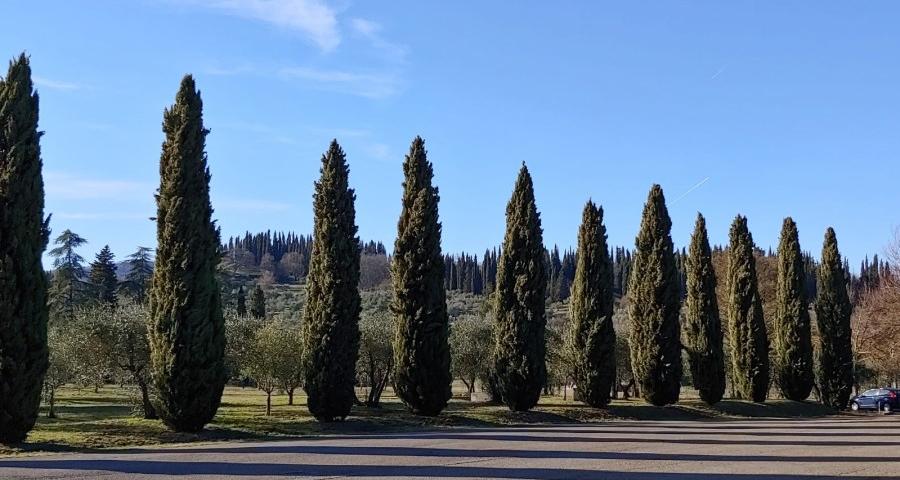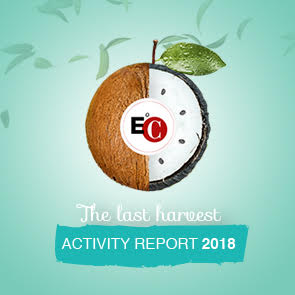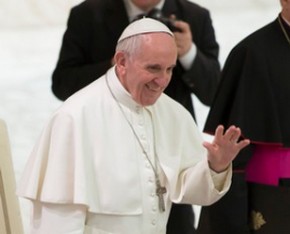The exile and the promise/ 15 - Words can enable us to see God and, even before that, woman and man
by Luigino Bruni
Published in Avvenire 17/02/2019
God is in charge of everything, the Lord of the Heavens. Everyone knows this. Then we have Prince Torlonia, lord of the land. Then come the Prince's guards. Then come the dogs of the Prince's guards. Then, nothing. Then, still nothing. Then, still nothing. Then we have the peasants and boors. And then you could say that’s it.
Ignazio Silone, Fontamara
Fatherhood, son ship and marriage are images present in many religions to express the relationship between people and their divinities. The Bible knows them well too, but uses them very sparingly. Because the urgency to mark a clear difference between YHWH and idol worship generated a strong diffidence towards using human images in order to speak of God. Christianity then generated perhaps the greatest religious innovation of all when it showed us a man-God who called YHWH by the family name of Abbà: father. But we would end up making the same error of the Canaanites and the Chaldeans if we thought that the fatherhood of God shown to us by Jesus Christ is a copy of human fatherhood. It only resembles it, as we resemble God of whom we are "the image and likeness"; a formula which expresses both proximity and distance, both of them maxims. Many religious diseases developed from a distance so great that it cancelled out all closeness, and others from an excessive closeness that ended up making God so similar to us as to render Him even trivial or useless.
Ezekiel has accustomed us to a language that is not afraid to cross even the dangerous territory of sexual metaphors to tell us about God: «The word of the Lord came to me: “Son of man, there were two women, daughters of the same mother. They became prostitutes in Egypt, engaging in prostitution from their youth. In that land their breasts were fondled and their virgin bosoms caressed. The older was named Oholah, and her sister was Oholibah. They were mine and gave birth to sons and daughters. Oholah is Samaria, and Oholibah is Jerusalem» (Ezekiel 23,1-4).
Hosea and Jeremiah had already introduced spousal metaphors before. Ezekiel himself (chapter 16) told us the story of the people's infidelity towards his God by resorting to the image of the girl, seen and chosen when she was young and poor, and later perverted into becoming a prostitute. Here, however, Ezekiel dares almost the unthinkable: this is no longer about a woman chosen as a young girl and subsequently ruined, but two women chosen when they were already prostitutes. We do not only read that YHWH marries two women ("they were mine"), therefore resorting to the image of a polygamous marriage which was forbidden to Jews (Leviticus 18,18); but YHWH marries two prostitute sisters in a polygamous contract, a huge and surprising fact, absolutely unique in all of biblical literature. Beyond any interpretation of the reasons for the radical nature of this chapter of Ezekiel’s, the parable of the marriage between YHWH and two prostitutes tells us a great deal, it must tell us a great deal.
First of all, it reminds us once more, that Israel has never had any fear in rebuilding and passing on an inglorious and at times even shameful history. In particular, the prophets, and among them especially those who lived and prophesied in the period of the exile (Jeremiah, the second Isaiah and Ezekiel), had the spiritual strength to tell the story of their people without the need of dressing it up in any kind of triumphalist and nationalist ideology. They were quite ruthless, and did not amend a single dark or scandalous pages of their past (or present). And hence they ended up saving it, and they continue saving us who read their pages in the midst of our own exiles and tragedies. "The truth shall set you free", is a pillar of all biblical humanism, especially that of the prophets.
When someone with a prophetic mission in a community, finds him or herself in exile or on the eve of a great collective tragedy, they have a real opportunity to save their people if they only resist the temptation to cancel and rewrite the less edifying passages of the past in order to better ideologically interpret the present. In order to sell better present and future scenarios, false prophets have an absolute need to amend and betray the past, because they are unable to discern and see traces of paradise in hell, sunrise in the dusk, the sunset during noon. Non-false prophets, on the other hand, do exactly the opposite. While they are saying "this story may be over", they also know how to say "however ... the story is not over". And while they repeat: "we have done terrible, scandalous and crazy things", they also manage to add: "but ... a remnant will be saved and will still do good and faithful things". While they remind us: "we are stubborn and inconvertible", they also tell us: "but YHWH is faithful and remains faithful".
And we must not make the mistake of thinking that the prophets are dominated by some kind of anthropological pessimism because they always remember the sins of the people. This would be a highly superficial and wrongful interpretation. They sing the beauty of man just as they see and denounce all of his misery. The infinite positivity and trust that the prophets have towards God immediately becomes their positivity and trust towards man. By speaking well of God they speak well of us, even when they speak only of infidelity and betrayal. This is the extraordinary strength of the biblical Covenant and the true covenants and pacts between us. As long as someone holds one end of the rope tightly, while being well rooted on his rock (who could be more rooted than YHWH?), if we too are well tied to the rope we will not fall into the void. The Bible shows us this millennial via ferrata, made of our own slipups continually saved by someone who never gave up, and who will still not give up. The strength of the biblical message lies in this tenacity; the prophets do not love us because they hide our (and their own) slipups, but because they assure us that up there, on the highest peak of the rock, well placed among its ledges, there is someone who is holding the rope for us as well. Someone of whom we are "the image and likeness", and hence we too will be able to hold, sometimes throughout our lives, a rope to save someone else, to save at least one. That phrase, stupendous and reckless, written in the first chapter of Genesis - "And Elohim created man in his image and likeness" - is the thread that holds theology and anthropology together, which allows us to extend the wonderful things that the Law and the prophets say of God to all women and men. A lace between heaven and earth that will forever prevent eternally cursing man as long as someone continues to praise God, which will continue to reverberate every psalm addressed to God on all men.
Finally, this chapter should cause us to spare a thought for all the women and victims we find in the Bible. The Bible was (perhaps) written only by males, and even if a woman's hand might have given it its touch here and there, hers were not the predominant hands. These men, however, were able to write wonderful pages about women and their genius (we met some of them in the commentary on the book of Samuel). But now, after reading this parable of the two prostitute sisters, chosen as the image and symbol of the perversion of Israel and Judah, it is difficult not to think of the many bad words about women that we find in the Bible, words that question us and cause turmoil.
In every age, including that of Ezekiel, prostitutes, both the profane and the sacred ones of the Canaanite and Babylonian temples, were really the victims of a world of men and of the rich and powerful who created them in order to satisfy their needs and vices. It would have been much more faithful to the historical period in question, if Ezekiel had used the image of unfaithful males betraying their wives with other women who were forced to prostitute themselves by life, poverty and men. Instead, the prophet describes the life, clothing, trade and punishment of the Babylonian prostitutes, whom he would have seen every day in the streets. And a later editor, less prophetic but more moralistic than Ezekiel, diverges slightly from the metaphor to even throw a warning to the women among his people: «So I will put an end to lewdness in the land, that all women may take warning and not imitate you» (Ezekiel 23,48). We should not be too surprised; the Bible has always been the subject of manipulative operations, this is a great inevitable vulnerability of any great text - even today there are commentators who use the parable of Matthew's talents, certainly not meant told to talk about economics and finance, for the sacralisation of meritocracy and the spirit of capitalism.
How, then, can and must we read these passages where victims are presented as icons of sin and perversion? We certainly cannot ask too much of the Bible on a social and anthropological level, forgetting the cultural context in which those texts were said and written. But we must not ask too little either, and risk going through these chapters without hardly seeing or "touching" the victims we meet at all. Ezekiel could do it and remain innocent. But we can't: we have to decide which side we want to be on while reading the stories of the Bible, if we want it to be able to remain among the living things of the earth and of our hearts.
So as we read the punishment that YHWH will inflict on the prostitutes for their infidelities – «They will cut off your noses and your ears, and those of you who are left will fall by the sword. They will take away your sons and daughters, and those of you who are left will be consumed by fire» (Ezekiel 23,25) – we can and must think of those mutilations and scarring of the face that the Babylonian males performed on these women's bodies and that many men still continue to perform around the world. Then repeat: "never again", and then work to ensure that the exercise of biblical reading immediately becomes an exercise in civility and ethics as well. Who knows how many redeemers of raped women and men went out into the streets after reading a biblical page with their flesh; and there, in the true encounter with the victims, ended up finding only innocence and infinite pain? The power of words lies in this ability to change our outlook, to make us see God differently and, even before, to make us see women and men differently. It is an education of the eyes of the soul, which enables us to repeat in our various encounters within and outside the Bible: "And look at him, he loved him".
In these years of commenting the Bible, I am learning to really see and observe its victims. When I meet them, I slow down, I gather my thoughts, I stop in my tracks. To really look at them, to be with them, to be touched and enriched, and then to wish to free them from their hell.
Download pdf article in pdf (218 KB)








